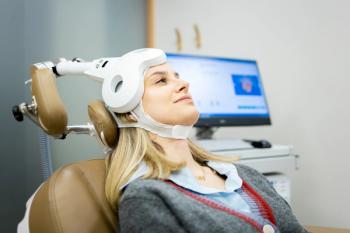
Don’t Forget About Fabry Disease
A rare genetic disorder may have unrecognized psychological consequences.
Fabry disease is a rare genetic disorder, so rare that its psychiatric consequences remain poorly understood. Although there have been studies evaluating psychological and psychiatric issues among patients with Fabry disease, very little has been written about individuals challenged by the burdensome symptoms associated with the disease, or about the emotional distress that can result from living with a
Causes and Consequences
Fabry disease is a pan-ethnic, X-linked lysosomal storage disorder caused by a deficiency of the enzyme α-galactosidase A (α-GAL); that results in the progressive accumulation of globotriaosylceramide, or Gb3.1-3 Classic Fabry disease mutations are seen in approximately 1:22,000 to 1:40,000 males, and atypical presentations are associated with about 1:1000 to 1:3000 males and 1:6000 to 1:40,000 females with a spectrum of phenotypes.4 Phenotypes vary from the classic phenotype, to a later-onset, predominantly cardiac phenotype. Manifestations are diverse in female patients in part due to variations in residual enzyme activity and X chromosome inactivation patterns. Newborn screening (NBS) studies revealed frequencies of the classic and later-onset phenotypes of up to 1 in 22,570 males and 1 in 1390 males, respectively.5
As Fabry disease progresses, it results in a multisystemic disease affecting the renal, cardiac, pulmonary, ocular, and dermal systems, as well as the peripheral and central nervous systems (CNS).6 Consequently, as substrate continues to build up, cellular dysfunction triggers organ impairment and eventually system damages. This can lead to substantial morbidity and
Fabry disease encompasses a spectrum of phenotypes ranging from the severe classic phenotype to atypical forms. The effective management of Fabry disease requires a multidisciplinary approach. It can be treated with bimonthly infusions of enzyme replacement therapy (ERT) to replace deficient α-galactosidase A, oral chaperone therapy, conventional medical treatment, or adjunct therapies.
CNS involvement precipitates cerebral micro and macro angiopathy leading to
Autopsy studies in Fabry disease patients have repeatedly shown severe globotriosylceramide (Gb3) accumulation in the neurons and ganglion cells of the hippocampus, which could ultimately lead to functional deterioration of the cells, compromised energy metabolism, oxidative stress, and cellular death.15 Gb3 deposition in Fabry disease is the result of the inherited reduction of α-Galactosidase and causes clinical manifestation in early childhood, with a slight delay in girls.9 Early accumulation of Gb3 in the lysosomes of cells and subsequent cellular death could thus be responsible for such early hippocampal atrophy, as observed in some studies. Neuropathic pain and major depression have also been shown to be strongly related to reduced hippocampal volume (HV) in otherwise healthy subjects.16 Given that pain and depression are frequent symptoms in Fabry disease, the impact of both on HV decline seems expected, but research is variable. Depressive symptoms naturally fluctuate over the course of time due to symptom variability and progression of the disease.17 Placebo-controlled studies are needed to address antidepressant treatment options in patients with Fabry disease, as
Clinical Manifestations Over a Lifespan
In Fabry disease, the presence of substrate accumulation can be traced back to the prenatal period; however, symptoms generally do not develop before early childhood.18 Affected children may experience acute and chronic neuropathic pain, described as a burning sensation and tingling in the hands and feet (acroparesthesia). They may also present with sweating abnormalities (anhidrosis, hypohidrosis) that make it difficult to exercise and perform physical activities. Abdominal pain and diarrhea have also been reported. During adolescence, gastrointestinal problems may increase in severity and frequency, and proteinuria can become elevated. Fabry crisis, manifested as severe pain radiating from the hands and feet, may occur spontaneously as a response to various environmental conditions like heat, cold,
Psychological Issues
Depression is common and underdiagnosed in Fabry disease. Previous research found that 60% of the patients enrolled in a study presented with clinical depression compared to healthy controls.14 Overall, depression is by far the most frequently reported psychiatric complication of Fabry disease, ranging from 15% to 62.5% in all series. Despite its prevalence, depression is not often discussed at clinic visits (Table 1). Although depression and anxiety are often reported, referrals to psychologists or psychiatrists are limited, and mental health professionals are rarely involved as part of the care team.
Studies past and present have indicated that depressive symptoms in Fabry disease can be related to pain as well as social factors, including economic status.3,6 Conversely, the relationship between depressive symptoms and renal, cardiac, or cerebral involvement is generally less prominent; subjective health perception plays a more active role.3,6,7 Differences in coping might influence the psychological well-being of Fabry patients. In a recent study, it was found that coping styles that involve avoiding emotional distress led to more depressive symptoms, while positivity and problem solving led to less depressive symptoms.3 Given the chronic multisystemic manifestations—pain, lack of sleep, and crippling fatigue—it would be extraordinary if individuals living with Fabry disease did not have to manage any psychological challenges.
Determining the importance of different factors related to depressive symptoms can aid in the identification of patients at risk and act as a starting point for specific psychological interventions to prevent or treat depressive symptoms.
Importance of Psychological and Psychiatric Evaluation
Over the past 20 years of working with patients diagnosed with Fabry disease, it has been troubling to see that common themes of depression,
It is critical that patients with Fabry disease have the support and resources they need to understand the physical manifestations and the psychological challenges that the condition can cause. Building a broader understanding of these issues can improve quality of life, as patients no longer have to define themselves by their illness. Learning how to process and explore these issues can provide a normalizing and gratifying opportunity to be happier and enjoy more success.
There are many steps a care team can take to screen for psychological issues. Primary care encounters are often the only opportunities for patients with Fabry disease to address emotional challenges and obtain the professional attention they require. For clinicians, forging empathetic partnerships with patients, prescribing appropriate treatments, and closely monitoring symptoms and therapeutic progress are invaluable for optimal management of both affective and medical disorders.
Cognitive behavioral therapy is often considered the most effective therapy for depression and anxiety. If patients are continuously thinking about negative outcomes, they begin to have a generalized feeling of hopelessness that can lead to a depressed or anxious mood. It can be beneficial for health care providers to help patients with Fabry explore ways to manage the disease. The common approach is to challenge negative thoughts and prompt the patient to explain the basis of their negative health perceptions.
Behavioral activation is just as important as the cognitive components of therapy. To help improve mood, patients should be encouraged to set goals and regularly partake in activities that they enjoy. In addition, many patients with depression and anxiety feel empowered when they can help choose the treatment approach used to manage their disease. Having a role in deciding how treatment is approached can also help support adherence, which is critical when coping with severe symptoms.
While data on the impact of depression treatment for patients with Fabry disease are limited, a recent pilot study examined the effects of psychological counseling on depression, adaptive functioning (AF), quality of life (QOL), and subjective pain experience. Subjects completed 6 months of in-person or telecounseling with the same health psychologist, followed by 6 months without counseling. Self-report measures of depression, AF, QOL, and subjective pain were completed every 3 months. All subjects experienced improvements in depression, which were sustained during the follow-up period.20 Study findings support the efficacy of psychological treatment for depression in individuals with Fabry disease, with additional benefits achieved when health psychologists aligned closely with lysosomal storage disease treatment centers in the patient management continuum.
Concluding Thoughts
Patients with depression and chronic illnesses such as Fabry disease are challenging to treat, but they are exactly the type of patient that can benefit from expert care.21 A growing body of evidence supports the view that chronic medical conditions and depression are interrelated. Collaborative care for psychological challenges is a treatment model that uses a multimodal, biopsychosocial, structured, evidence-based approach, involving nonmedical specialists. It is critical that care teams work with patients to develop a shared definition of potential issues, provide education and support, target treatment goals, develop a specific treatment plan, and provide follow-up.
Dr Bjoraker is a pediatric neuropsychologist with specialized training and expertise in rare genetic and neurodegenerative diseases. She served as faculty at the University of Minnesota and at the University of Colorado-Denver/Children’s Hospital Colorado where she participated in the neurometabolic, neurogenetic and neuromuscular clinic care teams. Dr Bjoraker is known nationally and internationally for her expertise in lysosomal storage diseases and other inborn errors of metabolism and neurodegenerative diseases. She is a presenter and researcher with extended publications in rare genetic diseases and experience in clinical trial development. Dr Bjoraker is also a consultant in Minneapolis, Minnesota.
References
1. Bolsover FE, Murphy E, Cipolotti L, et al. Cognitive dysfunction and depression in Fabry disease: a systematic review. J Inherit Metab Dis. 2014;37:177–187.
2. Cole AL, Lee PJ, Hughes DA, et al. Depression in adults with Fabry disease: a common and under-diagnosed problem. J Inherit Metab Dis. 2007;30:943–951.
3. Körver S, Geurtsen GJ, Hollak CEM, et al. Depressive symptoms in Fabry disease: the importance of coping, subjective health perception and pain. Orphanet J Rare Dis. 2020;15(1):28.
4. Matern D, Gavrilov D, Oglesbee D, et al. Newborn screening for lysosomal storage disorders. Seminars in Perinatology. 2015;39(3):206–216.
5. Ortiz A, Germain DP, Desnick RJ, et al. Fabry disease revisited: Management and treatment recommendations for adult patients. Mol Genet Metab. 2018;123(4):416–427.
6. Desnick RJ, Brady R, Barranger J, et al. Fabry disease, an under-recognized multisystemic disorder: expert recommendations for diagnosis, management, and enzyme replacement therapy. Ann Intern Med. 2003;138(4):338–346.
7. Bugescu N, Naylor PE, Hudson K, et al. The psychosocial impact of Fabry disease on pediatric patients. Pediatr Genet 2016;5(3):141–149.
8. Tuttolomondo A, Pecoraro R, Simonetta I, et al. Neurological complications of Anderson-Fabry disease. Curr Pharm Des. 2013;19(33):6014–6030.
9. Germain DP. Fabry disease. Orphanet J Rare Dis. 2010;5:30.
10. Fellgiebel A, Keller I, Martus P, et al. Basilar artery diameter is a potential screening tool for Fabry disease in young stroke patients. Cerebrovasc Dis. 2011;31(3):294–299.
11. Uceyler N, Homola GA, Guerrero Gonzalez H, et al. Increased arterial diameters in the posterior cerebral circulation in men with Fabry disease. PLoS One. 2014;9(1):e87054.
12. Fellgiebel A, Wolf DO, Kolodny E, Muller MJ. Hippocampal atrophy as a surrogate of neuronal involvement in Fabry disease. J Inherit Metab Dis. 2012;35(2):363–7.
13. Gunning-Dixon FM, Raz N. The cognitive correlates of white matter abnormalities in normal aging: a quantitative review. Neuropsychology. 2000;14(2):224.
14. Schermuly I, Muller MJ, Muller KM, et al. Neuropsychiatric symptoms and brain structural alterations in Fabry disease. Eur J Neurol. 2011;18(2):347–353.
15. Kaye EM, Kolodny EH, Logigian EL, Ullman MD. Nervous system involvement in Fabry's disease: clinicopathological and biochemical correlation. Ann Neurol. 1988;23(5):505–9.
16. Maletic V, Robinson M, Oakes T, et al. Neurobiology of depression: an integrated view of key findings. Int J Clin Pract. 2007;61(12):2030–40.
17. Yalcin I, Barrot M. The anti-depressive comorbidity in chronic pain. Curr Opin Anesthesiol. 2014;27(5):520–7.
18. van der Tol L, Smid BE, Poorthuis BJ, et al. A systematic review on screening for Fabry disease: prevalence of individuals with genetic variants of unknown significance. J Med Genet. 2014; 51(1):1–9.
19. Mehta A, Beck M, Eyskens F, et al. Fabry disease: a review of current management strategies. QJM.2010;103(9):641–659.
20. Ali N, Gillespie S, Laney D. Treatment of depression in adults with Fabry disease. J Inherit Metab Dis. 2018;38:13–21.
21. DiMatteo MR, Lepper HS, Croghan TW. Depression is a risk factor for noncompliance with medical treatment: meta-analysis of the effects of anxiety and depression on patient adherence. Arch Intern Med. 2000;160(14):2101–2107.
Newsletter
Receive trusted psychiatric news, expert analysis, and clinical insights — subscribe today to support your practice and your patients.














